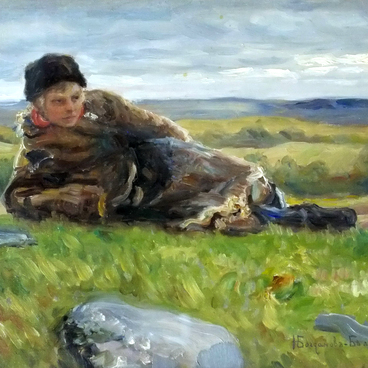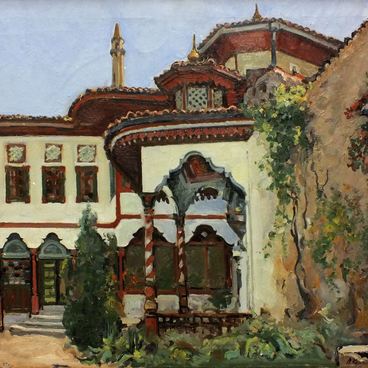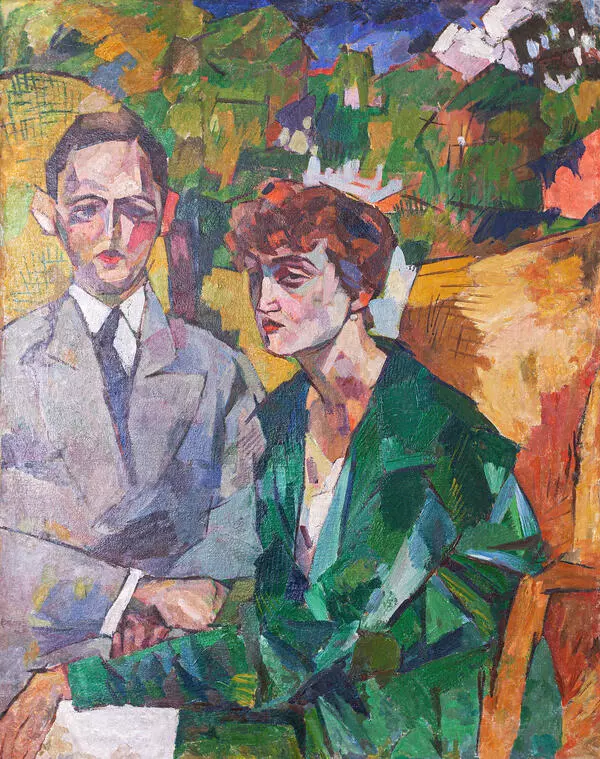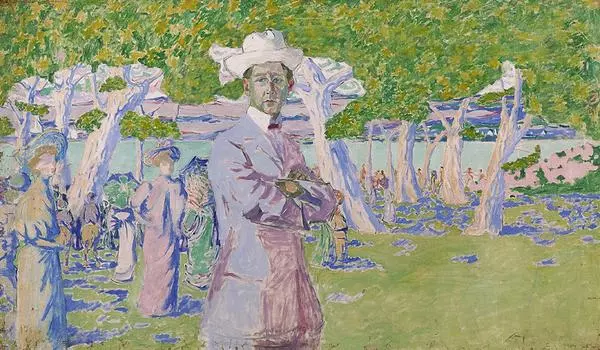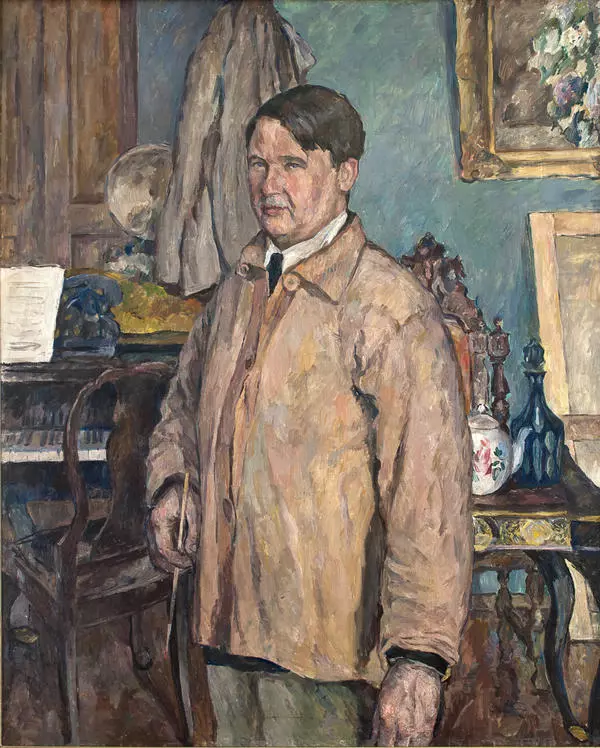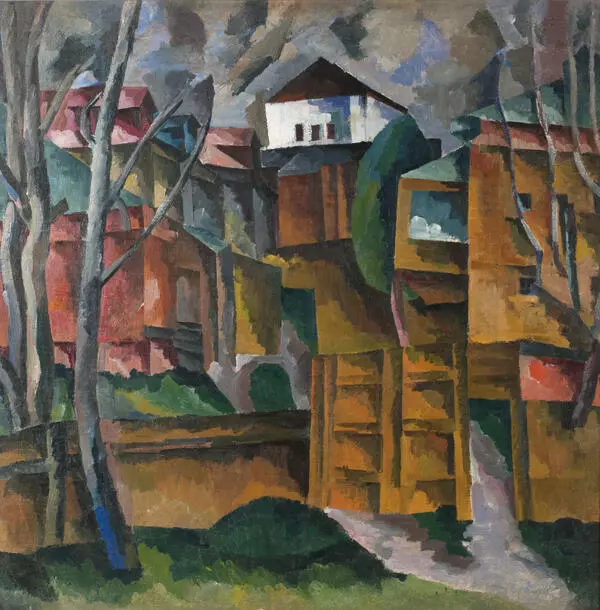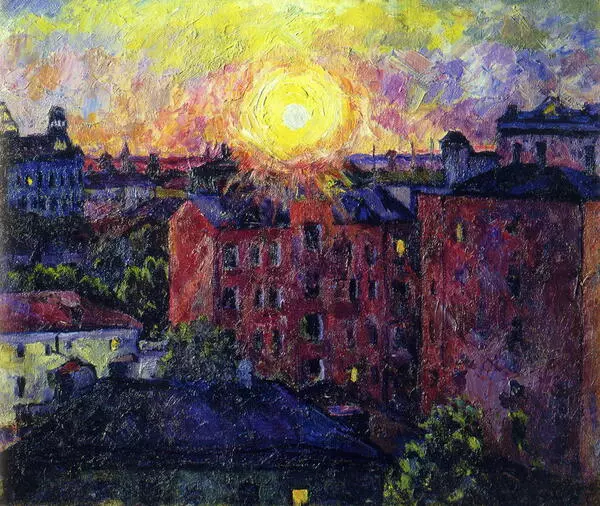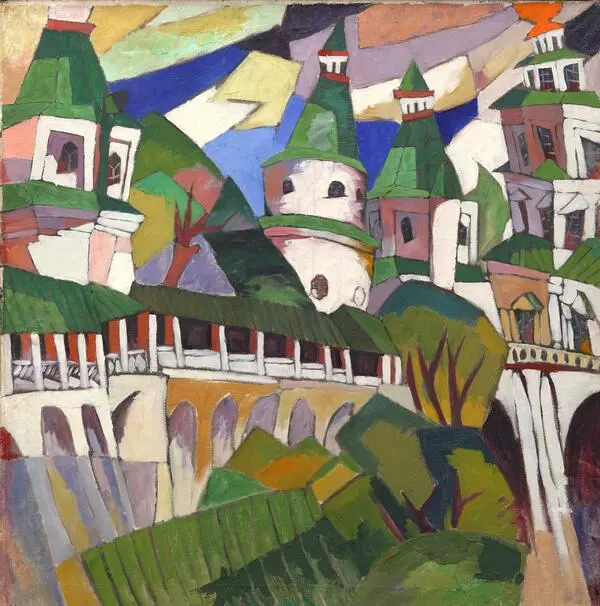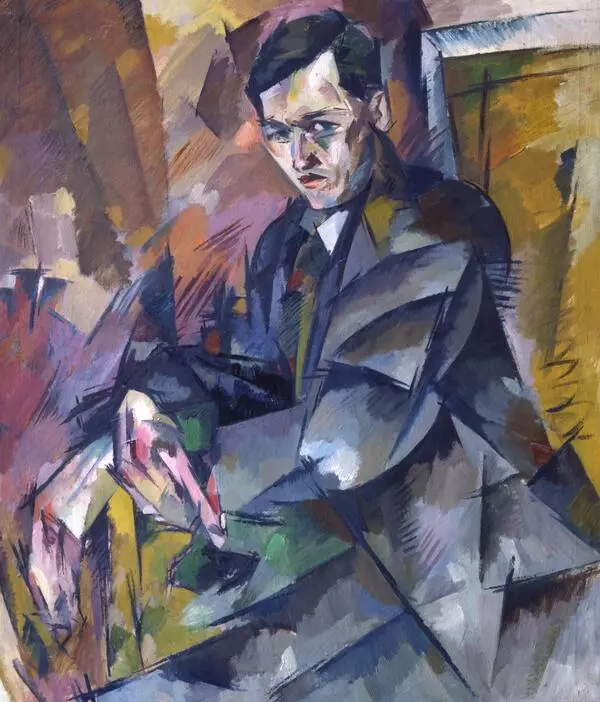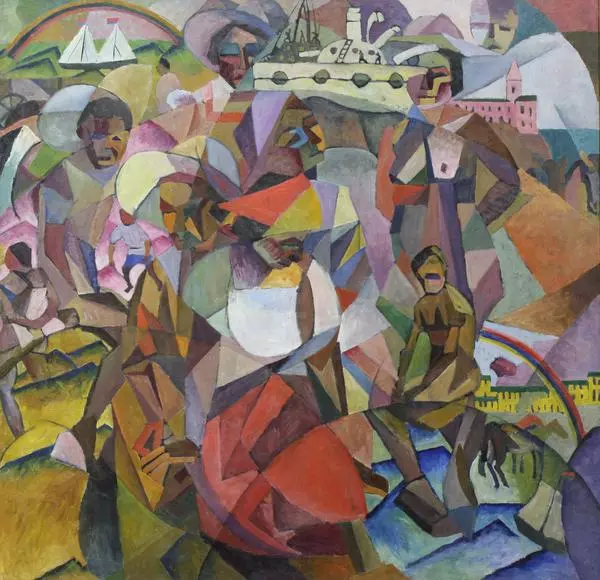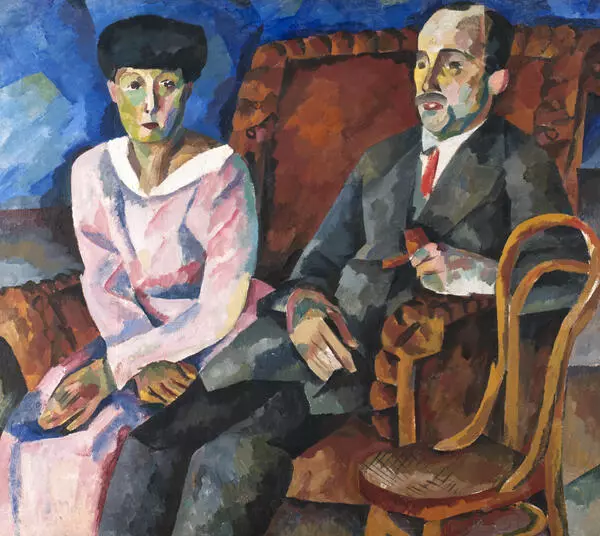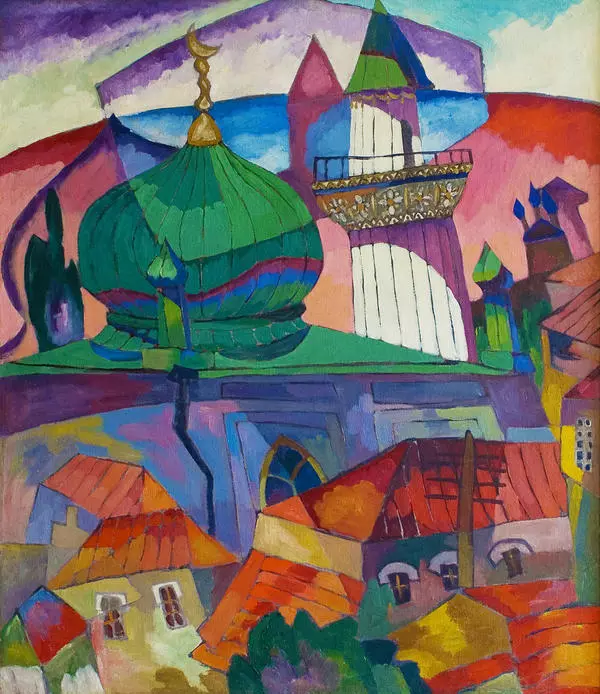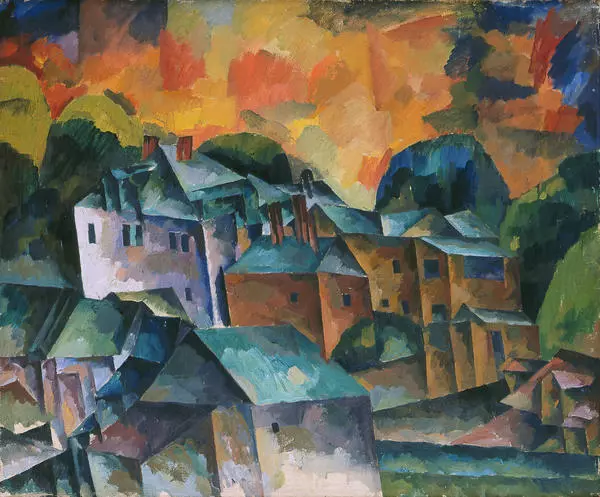The Minaret. Tbilisi was painted by Aristarkh Lentulov in 1936. In the foreground, we can see a sun-drenched bridge with people, behind the bridge there is a tower and a dome of a minaret against the background a mountain range that is not too far away from the town. This work was carried out in traditions of Realism art, in calm brown and blue tones, which is typical for the final period of Lentulov’s life. The artist began his path with a proper rebellion, both visually and literally.
The artist was born in a small village in Nizhnelomovsky district of Penza province in the family of a priest. But he didn’t follow in his father’s footsteps as was expected of him. Instead, he left the clergy path forever and entered the Penza Art School. But he didn’t stay there long either. Having studied for a little more than a year, Lentulov left the school together with several comrades because they had objected to the themes that were offered in the composition class. Then he entered the Kiev Art School, but was eventually expelled from there for systematic absenteeism. Next, the young Lentulov went to St. Petersburg, where he was noticed by the then famous Dmitry Kardovsky. Since 1905 Lentulov worked and studied in the workshop of Kardovsky. At the same time, he began to take part in avant-garde exhibitions that attracted a growing interest of the public.
In 1910 Lentulov became an ideological inspirer and founding member of the ‘Jack of Diamonds’ art association and dedicated all his time to Avant-garde art. In the same year, he creates the famous work Crucifixion, which was not allowed to the exhibition due to censorship. The avant-garde movement captivated the artist so much, that he went to France for further training at the private academy of La Palette. There he got acquainted with Cubist art theorists and even got a nickname ‘the futurist a la russe’ from his friends.
Filled with ideas, Lentulov returned to pre-revolutionary Russia. In 1913 appeared one of the most remarkable works of that period, the painting Vasily the Blessed, with an image of the cathedral on the Red Square, that was full of explosive cubistic and futuristic transformations.
After the revolution of 1917, Lentulov briefly was a member of the Association of Artists of Revolutionary Russia. Shortly after joining, he leaves the Association to become the head of the Moscow Artists' Union.
Since the end of the 1920s, Lentulov increasingly collaborates with the theater, where successfully creates stage scenery for The Windsor skank by Shakespeare and Prometheus by Scryabin. Ever since that period Lentulov’s artistic style tended to realism, and the forced color in his earlier works gave way to more tonal painting.
In the history of Russian painting, Lentulov is considered the most consistent of the Russian cubist and futurist artists and one of the founders of the Russian Avant-garde movement, along with Vladimir Mayakovsky, Vasily Kandinsky and Kazimir Malevich.
The artist was born in a small village in Nizhnelomovsky district of Penza province in the family of a priest. But he didn’t follow in his father’s footsteps as was expected of him. Instead, he left the clergy path forever and entered the Penza Art School. But he didn’t stay there long either. Having studied for a little more than a year, Lentulov left the school together with several comrades because they had objected to the themes that were offered in the composition class. Then he entered the Kiev Art School, but was eventually expelled from there for systematic absenteeism. Next, the young Lentulov went to St. Petersburg, where he was noticed by the then famous Dmitry Kardovsky. Since 1905 Lentulov worked and studied in the workshop of Kardovsky. At the same time, he began to take part in avant-garde exhibitions that attracted a growing interest of the public.
In 1910 Lentulov became an ideological inspirer and founding member of the ‘Jack of Diamonds’ art association and dedicated all his time to Avant-garde art. In the same year, he creates the famous work Crucifixion, which was not allowed to the exhibition due to censorship. The avant-garde movement captivated the artist so much, that he went to France for further training at the private academy of La Palette. There he got acquainted with Cubist art theorists and even got a nickname ‘the futurist a la russe’ from his friends.
Filled with ideas, Lentulov returned to pre-revolutionary Russia. In 1913 appeared one of the most remarkable works of that period, the painting Vasily the Blessed, with an image of the cathedral on the Red Square, that was full of explosive cubistic and futuristic transformations.
After the revolution of 1917, Lentulov briefly was a member of the Association of Artists of Revolutionary Russia. Shortly after joining, he leaves the Association to become the head of the Moscow Artists' Union.
Since the end of the 1920s, Lentulov increasingly collaborates with the theater, where successfully creates stage scenery for The Windsor skank by Shakespeare and Prometheus by Scryabin. Ever since that period Lentulov’s artistic style tended to realism, and the forced color in his earlier works gave way to more tonal painting.
In the history of Russian painting, Lentulov is considered the most consistent of the Russian cubist and futurist artists and one of the founders of the Russian Avant-garde movement, along with Vladimir Mayakovsky, Vasily Kandinsky and Kazimir Malevich.







